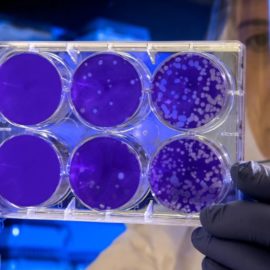
This is a free excerpt from one of Shortform’s Articles. We give you all the important information you need to know about current events and more.
Don't miss out on the whole story. Sign up for a free trial here .
What is synthetic meat? How is it produced? Is synthetic meat good for you?
In recent years, investors have been pouring money into the synthetic, or “no-kill,” meat industry. However, technical and economic factors may limit its growth.
Read on to learn what exactly synthetic meat is and everything else to know about the no-kill industry.
What Is Synthetic Meat?
Studies indicate that if synthetic meat products took over most of the market for meat, this would reduce water consumption, pollution, and greenhouse gas emissions relative to current meat farming. But what is synthetic meat, exactly? There are two types of synthetic, or “no-kill,” meat: meat made from plant proteins and meat made by growing actual animal meat cells in a laboratory. However, both types of artificial products are more expensive than regular meat, and they tend to appeal to niche markets rather than the traditional market.
In this article, we’ll explore the advantages of artificial meat, how it’s produced, and its likely future.
Why Is There Interest in No-Kill Meat?
Proponents of synthetic meat see it as a more environmentally sustainable alternative to current animal farming practices. Cattle consume large amounts of water and produce methane gas, while poultry farms contribute to water pollution. All of this could be reduced by producing synthetic meat instead.
Proponents also suggest that artificial meat is healthier than animal meat. And some hope to end the slaughter of animals for moral or sentimental reasons.
To assess the validity of these claims and the commercial viability of synthetic meat, we need to understand what constitutes synthetic meat and how it’s produced.
How Is It Produced?
There are two types of synthetic meat:
Plant-based meat is produced by combining ingredients from plants and processing them into a product that resembles meat. For example, a substance resembling chicken can be synthesized from pea protein and wheat gluten.
Cultured meat is made of animal cells that are grown in a laboratory. Under controlled conditions, stem cells extracted from an animal will multiply and form muscle tissues, allowing real meat to be harvested without slaughtering animals.
What’s in the Future for the No-Kill Industry?
The future of synthetic meat depends on how well it actually delivers on its perceived advantages.
Is It Healthier?
Consumers trying to improve their diets may gravitate toward plant-based meat substitutes because in general, plant protein leads to fewer health problems like heart disease, high blood pressure, and cancer. However, many dieticians are cautious about declaring plant-based synthetic meats better for you than regular meat—they’re often highly processed, and highly processed foods are much worse for you than unprocessed foods.
In theory, cultured meat would be more sterile than natural meat and could be engineered to have less fat and more vitamins, but this has yet to be demonstrated in practice.
Is It Better for the Environment?
Studies tend to support the claim that the manufacturing of synthetic meat consumes fewer natural resources and produces less greenhouse gas than the raising and butchering of farm animals per pound of meat produced. However, it also consumes more energy and produces more greenhouse gas than a nutritionally equivalent quantity of unprocessed plant-based foods.
On top of this, to make a real difference, synthetic meat needs to displace agricultural meat by capturing its market share. Currently, plant-based meat only constitutes about 0.66% of the global meat market ($5.8 billion out of $897.5 billion) and may have already saturated the market, as we discussed earlier.
In theory, cultured meat could solve this problem by giving consumers real meat that’s simply produced in a factory instead of on a farm. However, some analysts are skeptical about the feasibility of producing cultured meat on a scale that would rival farm production. A facility for growing animal cells must be kept extremely sterile, which becomes more difficult and expensive as its size and complexity increase.
Analysts expect that cultured meat will cost at least $16.80 per pound to produce. After the manufacturer, wholesaler, and retailer all mark up this price to make a profit, retail prices are likely to be above $40/lb. At this price point, cultured meat products might be competitive in high-end niche markets like sushi-grade sea food, but they’re unlikely to capture a significant share of the market for meat products in general.

Want to fast-track your learning? With Shortform, you’ll gain insights you won't find anywhere else .
Here's what you’ll get when you sign up for Shortform :
- Complicated ideas explained in simple and concise ways
- Smart analysis that connects what you’re reading to other key concepts
- Writing with zero fluff because we know how important your time is






